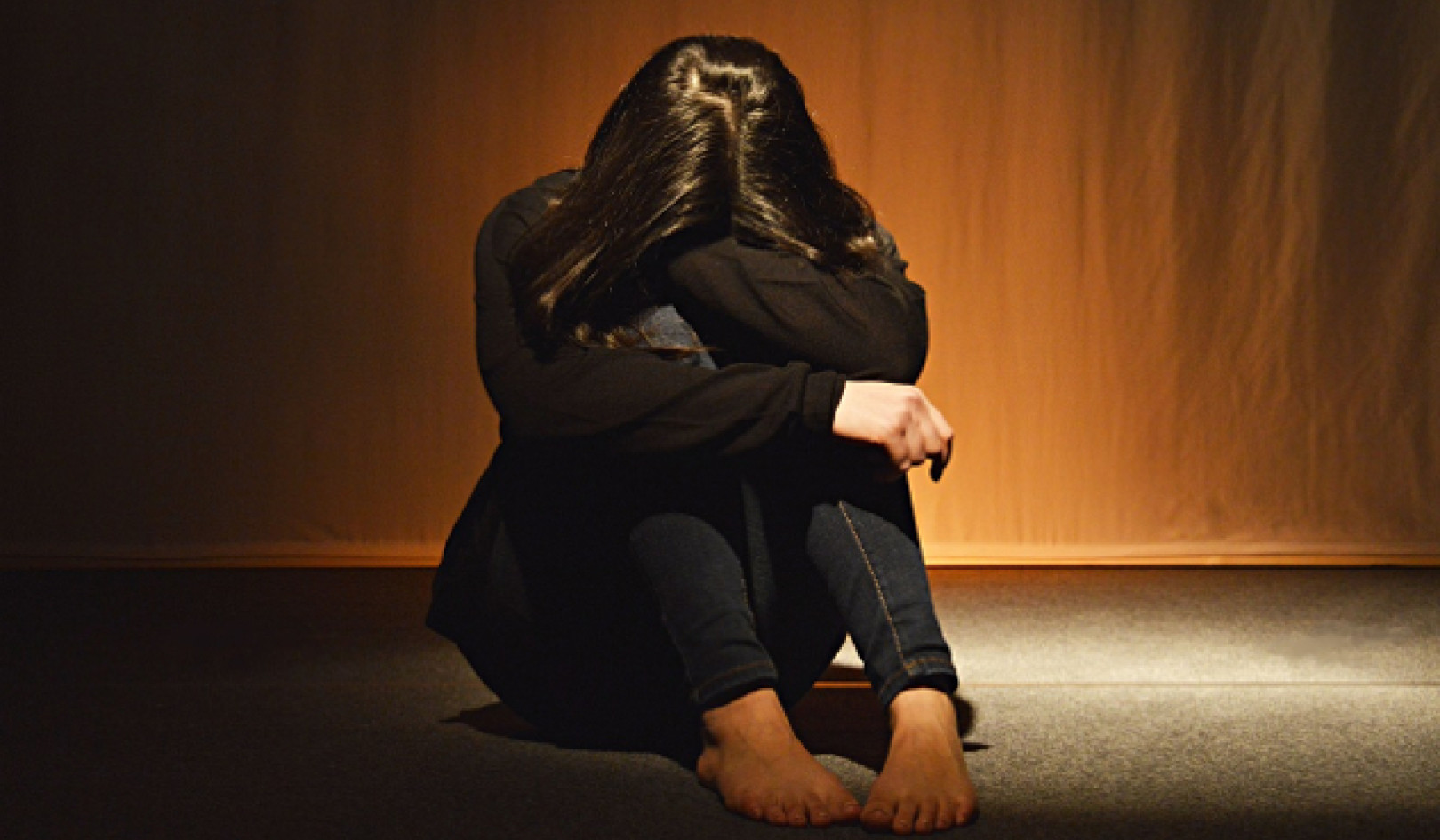
Image by dddreams
Our individual reactions to life events are complex and unpredictable. Some people come out of very difficult life experiences with more resiliency and capacity.
Trauma is not in the event but in the nervous system of the person experiencing the event. So the same event or experience could affect two people in completely different ways (one with resilience and one perceiving the event as traumatic having very negative effects), while others may suffer coping with life, leading them to become more hypersensitive and easily triggered.
Your reaction to past events does not make you a weak or a bad person. Trauma gets locked in the nervous system of the body, and it takes specific types of guidance to unravel and clear the mental, emotional, and physical effects.
Proceed Gently
If you have experienced physical or sexual abuse, or negative effects due to medical procedures, or if you find yourself experiencing high anxiety, panic attacks, intense rage, depression, hopelessness, or completely disconnecting (disassociating) when you attempt to sit with your feelings as you do the Warrior Heart practice, you may need additional support on your healing journey.
If you know you have PTSD or other trauma-related responses to stimuli, please proceed gently with the Warrior Heart practice. It is best to find someone who specializes in trauma therapy or counseling. I highly recommend finding a somatic- (body-) based therapist.
It is critical that you learn specific skills and tools to both avoid retraumatizing yourself and to slowly release the trauma from your body, desensitize/heal your nervous system, and stretch your capacity to sit with intense emotions/thoughts/experiences. You can share the Warrior Heart practice with your therapist or guide and ask them to lead you through the process. This way, they can observe and help you to notice what is happening in the body so that you can regulate your system and stay present in your body.
My experience with trauma, both in myself and with friends and students, is that you must proceed slowly and with great care. This is not a time to try to “power through” your emotions or reactions. Please don’t beat yourself up because you cannot let go of a story or you get stuck in a feeling. There are physiological and chemical responses at work, and trying to use the mind to “get over” trauma usually causes people to bypass their emotions and pretend that they are okay. This is a form of self-abandonment that does not lead to healing but to deeper distrust in the body and psyche.
At the end of this article is a list of resources if you think you may be having a trauma reaction or if you are a support person for someone with past trauma.
Calm Presence, Kindness, and Love
If you are in a relationship with a person who has experienced trauma, listen with great kindness and presence to their experiences and struggles. You don’t need to coddle them or walk on eggshells, but you do need to understand that they are dealing with intense physical, chemical, and brain challenges that are not going to be fixed by telling them to “just stop telling yourself the story” or asking them, “Why are you still reacting to that?” People who have experienced trauma need calm presence and love and your faith that they will find the resources and tools to heal.
One of my students, Laura, shared with me while learning the Warrior Heart practice:
The importance of knowing you are safe and that what ever the trauma is, is not happening now is so, so important. Orienting to safety has become my many-times-a-day practice. Just knowing you are safe and having your body believe it can really start to change someone’s life.
Trauma collapses time for sure, so learning to stretch it is the practice for me. It gives time to pause, breathe, and reflect before reacting out of fear. It also gives time to get out of freeze and feel your body, whatever is present.
It helps so much to know you are not alone and that others have these experiences. Even as I struggle with my reactions, it helps so much to understand what the body does and acknowledge that I am where I am and I’ve come so far. I’m getting more and more clear. It is so good to know that the trauma reaction is just a part of me and not the whole.
Chris: The Warrior Heart Practice for Trauma
We are living in an exciting time for Western neuropsychology where technology is giving us understanding of how trauma affects the nervous system as well as why certain practices (both ancient and recently developed) work to heal trauma and PTSD. I have been fortunate to work with an osteopath and a chiropractor who were well versed in polyvagal theory and did amazing craniosacral work, releasing much of the trauma held in my nervous system.
I also was fortunate to be a student of HeatherAsh Amara when she was first teaching the Warrior Heart practice. I continue to use it frequently for the normal day-to-day triggers as a tool to let emotion move and uncover and transform deep agreements and bring greater presence to my inner world. That said, when dealing with a body that has suffered trauma, self-knowledge, compassion, and intelligence are needed to know what practices will help and when.
I had had a significant session with the osteopath releasing not only the vagus nerve but restrictions in the pelvic floor. Two days later, apparently my cells were ready to release more trauma at a deeper level. Standing in the kitchen just finishing doing my dishes, I suddenly, with no apparent trigger, had a flashback of a childhood trauma. I held on to the edge of the counter as my body completely froze. I was not feeling emotion and had almost no thoughts. I went into the Warrior Heart practice but immediately altered the normal practice. Knowing that reliving memories of trauma can actually retraumatize the nervous system, I immediately shut the door of the Story Chamber—the flashback is the story. I stepped into the Truth Chamber.
Truth: This is a flashback. It happened in the past. It is not happening now. That is the truth.
Truth: I am safe in this moment. I am alone, and the doors of my apartment are locked. In this moment, I am safe.
I had entered into a witness space, noticing my body still frozen, and more amazing to me was the stillness in my mind. Then the third truth arose spontaneously: This is an opportunity for healing.
I stepped into the Intent Chamber. My intent is to take care of my body and my nervous system. My intent is to use this moment to heal.
From there, I started asking the question, What does my body need now?
For quite a while, it was clear my body needed to stay very still. When finally the body was ready to move, I repeated the question, What does my body need now to help it heal? My mind back online, I went through the tool set I have acquired, physical and psychological practices from such resources as Peter Levine, Julie Hendersen, and Rick Hansen, letting my body dictate which ones would work best in each moment.
Eventually, reminding myself that the truth was I was safe in the moment, I went outside and leaned into a large tree. I asked it to help to bring my energy body back into my physical body and show me how to ground it into the earth.
On this occasion, by not going to the Feeling and Story Chambers at all and potentially ending up in a victim story or retraumatizing my nervous system or creating emotions that were not present, I was able instead to use the Truth and Intent Chambers as a means of healing and self-love.
Resources for Working with Trauma
Waking the Tiger by Peter A. Levine
In an Unspoken Voice by Peter A. Levine
Trauma Through a Child’s Eyes by Peter A. Levine and Maggie Kline
The Body Keeps the Score by Bessel van der Kolk
Getting Past Your Past by Francine Shapiro
Complex PTSD: From Surviving to Thriving by Pete Walker
Somatic Experiencing Trauma Institute (https://traumahealing.org)
©2020 by HeatherAsh Amara. All Rights Reserved.
Excerpted with permission from: The Warrior Heart Practice.
Publisher: St Martin's Essential, www.stmartins.com.
Article Source
Warrior Heart Practice
by HeatherAsh Amara
 A revolutionary process based on the four chambers of the heart and rooted in Toltec wisdom that brings emotional clarity, healing, and freedom. The Warrior Heart Practice is a powerful new method to reconnect with our sense of authenticity and inner-knowing and realign with our true nature. Author of the bestselling book Warrior Goddess Training, HeatherAsh Amara has trained extensively in the Toltec tradition under the tutelage of don Miguel Ruiz, author of The Four Agreements. (Also available as a Kindle edition, an Audiobook, and an Audio CD.)
A revolutionary process based on the four chambers of the heart and rooted in Toltec wisdom that brings emotional clarity, healing, and freedom. The Warrior Heart Practice is a powerful new method to reconnect with our sense of authenticity and inner-knowing and realign with our true nature. Author of the bestselling book Warrior Goddess Training, HeatherAsh Amara has trained extensively in the Toltec tradition under the tutelage of don Miguel Ruiz, author of The Four Agreements. (Also available as a Kindle edition, an Audiobook, and an Audio CD.)
About the Author
 HeatherAsh Amara is the author of a number of books including the 'Warrior Goddess Training' series. She brings an openhearted, inclusive worldview to her writings and teachings, which are a rich blend of Toltec wisdom, European shamanism, Buddhism, and Native American ceremony. She travels and teaches throughout the United States as well as internationally. Visit her website to learn more at HeatherashAmara.com
HeatherAsh Amara is the author of a number of books including the 'Warrior Goddess Training' series. She brings an openhearted, inclusive worldview to her writings and teachings, which are a rich blend of Toltec wisdom, European shamanism, Buddhism, and Native American ceremony. She travels and teaches throughout the United States as well as internationally. Visit her website to learn more at HeatherashAmara.com




























